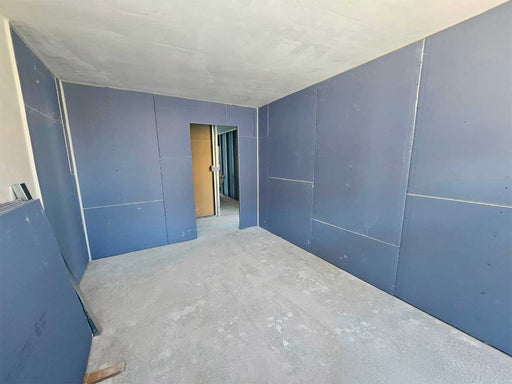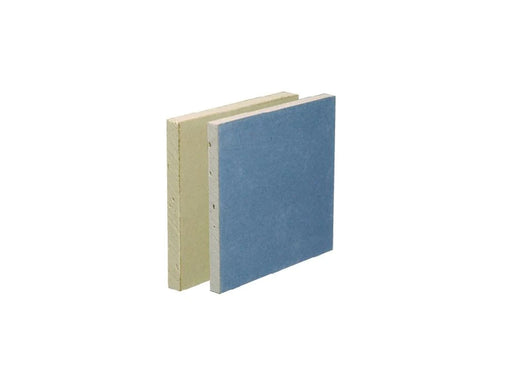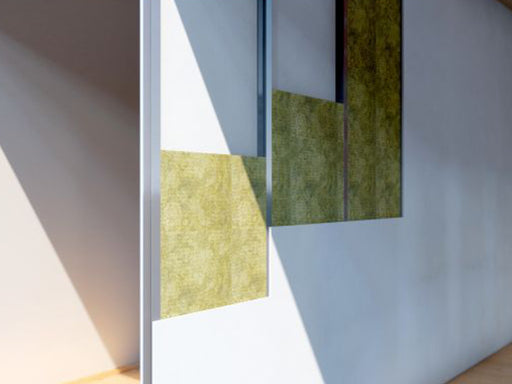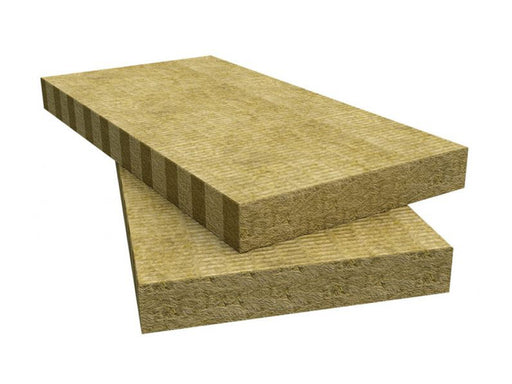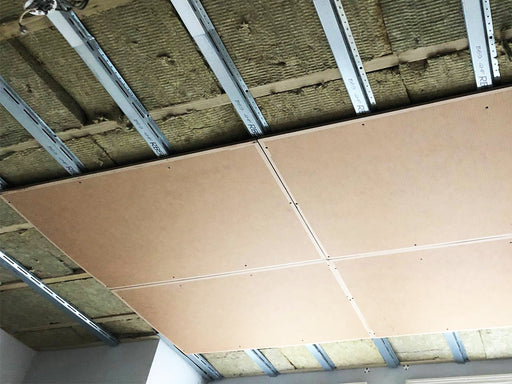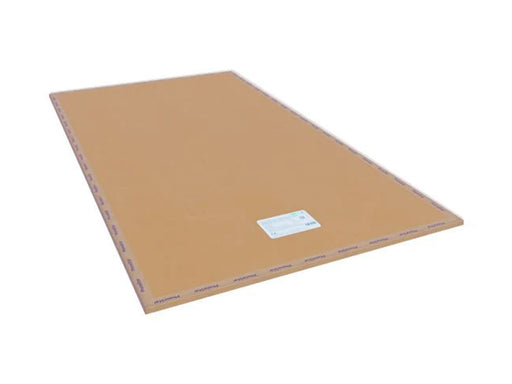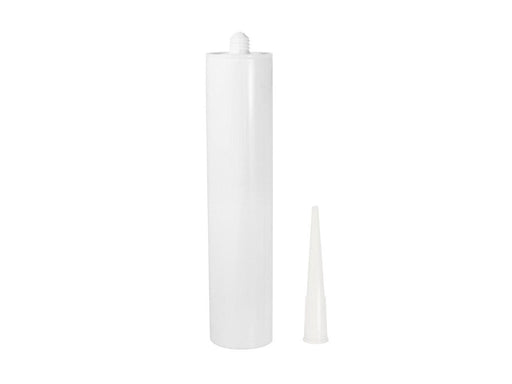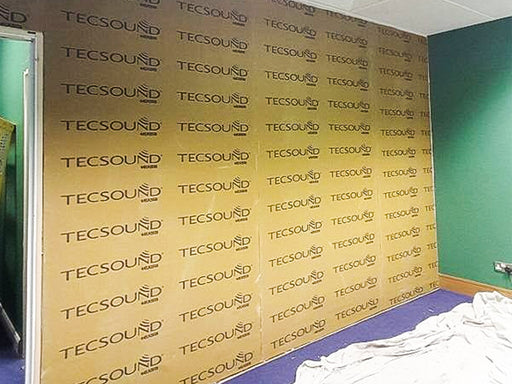The Zentia Aruba Acoustic Suspended Ceiling Tiles, formerly known as Dune eVo, are the epitome of superior acoustic performance combined with a sleek and durable design. These tiles are perfect for creating a quieter, more comfortable environment in a variety of commercial and public spaces, such as offices, classrooms, healthcare facilities, and retail establishments. Their Class C sound absorption and 34dB sound attenuation ensure exceptional noise control, while their moisture resistance and scratch-resistant surface make them durable and easy to maintain.
Designed with sustainability in mind, these tiles contain up to 44% recycled materials and are fully recyclable, contributing to a greener environment. Whether you’re looking to improve acoustics or enhance the aesthetic appeal of a space, Zentia Aruba Acoustic Ceiling Tiles offer a dependable, eco-friendly solution.
What is an Acoustic Ceiling Tile?
Acoustic ceiling tiles are specifically engineered to improve sound control within a space. They absorb sound waves to reduce echoes and reverberation, making them an essential addition to environments where clear communication and sound quality are critical. These tiles not only improve speech clarity and privacy but also help create a peaceful atmosphere by reducing background noise. Whether in offices, schools, or healthcare facilities, acoustic ceiling tiles enhance both functionality and comfort, contributing to more productive and pleasant environments.
How Does the Zentia Aruba Acoustic Ceiling Tile Work?
The Zentia Aruba Acoustic Ceiling Tile is crafted from advanced materials designed to manage sound effectively. Key features include:
- Sound Absorption (Class C): These tiles absorb sound waves (NRC 0.5), reducing reverberation and creating a quieter environment.
- Sound Attenuation (34dB): By minimising sound transmission between adjacent spaces, the tiles maintain privacy and limit disruptions.
- Porous Surface: The surface texture optimises acoustic performance by diffusing sound energy.
- Durable Construction: The tile's robust materials resist damage while maintaining acoustic properties.
This combination ensures balanced acoustic performance, making them suitable for busy environments requiring noise control without sacrificing clarity.
How Effective Are the Zentia Aruba Acoustic Tiles at Stopping Nuisance Noise?
The Zentia Aruba Acoustic Tiles provide exceptional acoustic control, addressing both airborne and impact noise:
-
Noise Reduction: Class C sound absorption ensures a quieter atmosphere by reducing echoes and reverberations in open or noisy areas.
-
Privacy Enhancement: The 34dB sound attenuation prevents excessive sound transfer between rooms, maintaining a calm and private environment.
-
Balanced Acoustic Control: While reducing background noise, these tiles still allow for clear speech transmission, making them perfect for offices, classrooms, and meeting spaces.
These properties make the Zentia Aruba tiles indispensable for creating environments where sound control and communication are equally important.
What is the Fire Safety & Technical Performance of the Aruba Acoustic Tiles?
Zentia Aruba Acoustic Ceiling Tiles meet rigorous fire safety and technical standards to ensure safety and durability:
-
Fire Rating (EN 13501-1): Rated A2-s1,d0, these tiles resist the spread of fire and contribute minimally to fire load and growth, making them suitable for high-risk environments.
-
Scratch Resistance: The durable surface withstands wear and tear in high-traffic areas, maintaining its appearance over time.
-
Humidity Resistance: Rated for 95% relative humidity, the tiles remain stable and warp-free even in damp or moisture-prone conditions.
-
Sustainability: Certified for low VOC emissions and formaldehyde emissions (E1 rating), ensuring healthier indoor air quality.
This combination of safety, durability, and environmental performance makes them a reliable choice for demanding commercial and public spaces.
Where Can the Zentia Aruba Acoustic Suspended Ceiling Tile Be Used?
The versatility of the Zentia Aruba Acoustic Tiles allows them to excel in various environments:
-
Offices and Workspaces: Reduce noise distractions, improving productivity and focus.
-
Healthcare Facilities: Create a calm, acoustically balanced atmosphere for patients and staff.
-
Educational Institutions: Control sound in classrooms, lecture halls, and libraries for better learning environments.
-
Retail and Leisure Spaces: Offer a quiet and comfortable experience for customers and employees.
-
Public Buildings: Improve functionality and aesthetics in high-traffic areas like receptions and waiting rooms.
These tiles are adaptable to almost any space where sound control and aesthetic appeal are desired.
How to Install the Aruba Suspended Ceiling Tile?
The Zentia Aruba Acoustic Suspended Ceiling Tiles are designed for effortless installation:
- Prepare the Grid System: Install a standard suspended ceiling grid, ensuring it is level and secure.
- Insert the Tiles: Position the tiles into the grid, ensuring they fit snugly and evenly.
- Adjust for Perfection: Ensure all tiles are aligned for a seamless, professional finish.
Their precise dimensions and lightweight design make installation straightforward for professionals and DIY enthusiasts alike.
What Maintenance Do the Zentia Aruba Acoustic Ceiling Tiles Need?
Maintaining the Zentia Aruba Acoustic Ceiling Tiles is simple and cost-effective:
-
Routine Cleaning: Use a dry cloth or soft brush to remove dust and debris.
-
Deep Cleaning: For tougher stains, use a damp sponge with mild detergent.
-
Humidity Resistance: The 95% humidity resistance ensures that the tiles remain stable and free from warping, even in damp environments like kitchens or bathrooms.
This low-maintenance design ensures the tiles retain their acoustic and aesthetic qualities for years.
What Are the Benefits of Using the Zentia Aruba Acoustic Suspended Ceiling Tiles?
- Acoustic Performance: Class C sound absorption and 34dB attenuation offer superior noise control.
- Durability: Scratch-resistant and moisture-resistant for long-lasting use.
- Ease of Installation: Lightweight and precisely dimensioned for hassle-free installation.
- Fire Safety: High fire rating (A2-s1,d0) ensures enhanced safety.
- Aesthetic Appeal: Smooth, sanded finish enhances the visual quality of any space.
- Low Maintenance: Easy to clean and resistant to wear and tear.
- Versatility: Suitable for a wide range of commercial and public applications.
- Sustainability: Made from 44% recycled materials and fully recyclable.
Are the Zentia Aruba Acoustic Ceiling Tiles Environmentally Friendly?
Yes, the Zentia Aruba Acoustic Ceiling Tiles are crafted with sustainability in focus:
-
Recycled Content: Composed of 44% recycled materials, including recycled newspapers and calcite.
-
Recyclable: Fully recyclable through Zentia’s recycling scheme, reducing environmental impact.
-
Low VOC Emissions: Certified by Eurofins Indoor Air Comfort for healthy indoor air quality.
These features make them an eco-friendly choice for projects prioritising sustainability and environmental responsibility.
Zentia Aruba Fire Safety and Technical Performance
The Zentia Aruba Acoustic Ceiling Tiles are designed with safety and durability in mind, meeting stringent fire and technical standards to ensure long-lasting, secure installations. Classified under the EN 13501-1 fire safety standard with a rating of A2-s1,d0, these tiles are engineered to resist fire spread and won’t significantly contribute to the fire load or growth in the event of a fire. This makes them a reliable choice for commercial and public spaces where safety is a top priority.
In addition to fire safety, Zentia Aruba tiles offer superior scratch resistance, maintaining their appearance in high-traffic areas. They are rated to withstand 95% relative humidity, ensuring they remain stable and warp-free, even in damp environments. This robust combination of fire safety, durability, and environmental resistance ensures that Zentia Aruba tiles not only enhance the acoustics of a space but also offer peace of mind and longevity in any installation.
Why Choose Zentia Aruba Ceiling Tiles?
Zentia Aruba Ceiling Tiles stand out for their superior quality, performance, and versatility:
-
Proven Reliability: Trusted by architects and installers across the UK for consistent performance.
-
Stylish Design: Sleek, sanded surface enhances the aesthetic appeal of any space.
-
Eco-Conscious Choice: Manufactured with recycled materials and designed for recyclability.
-
Comprehensive Acoustic Control: Combines sound absorption and attenuation for optimal noise management.
-
Safe and Durable: Fire-resistant, scratch-resistant, and moisture-resistant for long-term reliability.
Whether you're upgrading an office, a school, or a healthcare facility, the Zentia Aruba Acoustic Suspended Ceiling Tiles provide an exceptional solution for acoustic management, durability, and sustainability.
In-depth Installation Instructions for Zentia Aruba Acoustic Suspended Ceiling Tiles
Tools You'll Need:
- Tape measure
- Spirit level
- Tin snips
- Pencil
- Pliers
- Power drill with masonry or timber drill bits (depending on ceiling construction)
- Sharp utility knife
- String line or laser level
- Safety gloves and glasses (for protection)
Materials You'll Need:
- Perimeter/wall trim
- Main tees (grid support beams)
- 1200mm and 600mm cross tees (depending on ceiling tile size)
- Suspension wire
- Brackets or wire hangers (depending on ceiling type)
- Zentia Aruba Acoustic Suspended Ceiling Tiles
Step-by-Step Guide to Creating a Suspended Ceiling
Step 1: Planning and Measuring Your Ceiling Layout
Good planning is key to a clean, professional finish. Begin by measuring your room and drawing a scaled plan of the ceiling, considering the layout of the main and cross tees. A well-planned suspended ceiling ensures evenly spaced tiles with equal sizes around the border.
- Main tees should run perpendicular to the ceiling joists and spaced 1200mm apart.
- 1200mm cross tees should run across the main tees at 600mm intervals for 1200mm x 600mm tiles.
- If you're using 600mm x 600mm tiles, add 600mm cross tees between the 1200mm ones to form the grid.
- Mark the suspension points starting 400-600mm from the walls and then spaced every 1200mm along the main tees.
- If you’re planning to install ceiling lights, include their positions in your layout.
Step 2: Fix the Perimeter Trim
The perimeter trim, or edge trim, supports the grid system around the room. Set the trim at your chosen ceiling height and ensure that it is at least 100mm below the original ceiling for enough working space. If adding insulation or lighting, leave more space (200-300mm or more).
- Use a spirit level to mark a straight line at the ceiling height around the room’s perimeter.
- Fix the perimeter trim to the wall using appropriate screws for your wall type, spacing fixings about 350mm apart.
- Mitre the corners (cut at a 45-degree angle) for a neat, professional finish.
Step 3: Position the Suspension Points
Now, install suspension points where your grid will hang. These points support the main tees, preventing sagging.
- Mark suspension points in alignment with your layout. Each main tee should be supported at 1200mm intervals.
- Use brackets or wire hangers depending on the type of ceiling:
- Wire hangers for concrete ceilings
- Purlin clips for metal purlins
- Ceiling brackets for timber joists
- Cut suspension wire to the necessary length: the distance between the original and suspended ceiling plus an additional 300mm to allow for adjustments.
Step 4: Install the Main Tees
Once your perimeter and suspension points are in place, begin installing the main tees.
- If the room length exceeds the main tee length (usually 3.6m), connect two sections and cut to size.
- Position the first main tee on your 1200mm marks along the perimeter trim. Ensure it is straight using a laser level or string line.
- Secure the main tee at the other end, cutting it to fit snugly against the opposite wall’s trim.
- Use the slots along the main tee to insert cross tees later.
Step 5: Install the Cross Tees
Next, fit the cross tees into the main tees to form the grid.
- Insert the tabs of the 1200mm cross tees into the slots on the main tees at 600mm intervals.
- If using 600mm x 600mm tiles, insert 600mm cross tees into the 1200mm ones to form the smaller grid squares.
- Continue across the room, periodically placing a tile in the grid to help maintain its shape and prevent distortion.
- For the last cross tee against the wall, you may need to use tin snips to cut it to fit.
Step 6: Insert the Zentia Aruba Acoustic Ceiling Tiles
Now that the grid is complete, it’s time to insert the Zentia Aruba Acoustic Suspended Ceiling Tiles.
- Starting at one side of the room, tilt and slide each tile into the grid, then lower it into place.
- Cut tiles to fit along the edges of the room by measuring and marking the required size, then scoring with a utility knife.
Step 7: Add Insulation (Optional)
If adding insulation, now is the time to place it.
- Lay the insulation on top of each tile within the grid to increase the acoustic and thermal performance of the suspended ceiling.
Final Checks and Adjustments
Once all tiles are installed, inspect the ceiling for any misalignments or sagging. Ensure that the grid is level and all tiles fit securely in place.
Safety Tips:
- Wear safety gloves and glasses to protect yourself from sharp metal edges when cutting tees.
- Ensure your ladder or steps are stable and your work area is clear of obstructions.
Visit our Fitting Instructions section for more detailed instructions relating to your specific application.
Check out our Soundproofing Guides for more information, advice and tips on all aspects of soundproofing.







